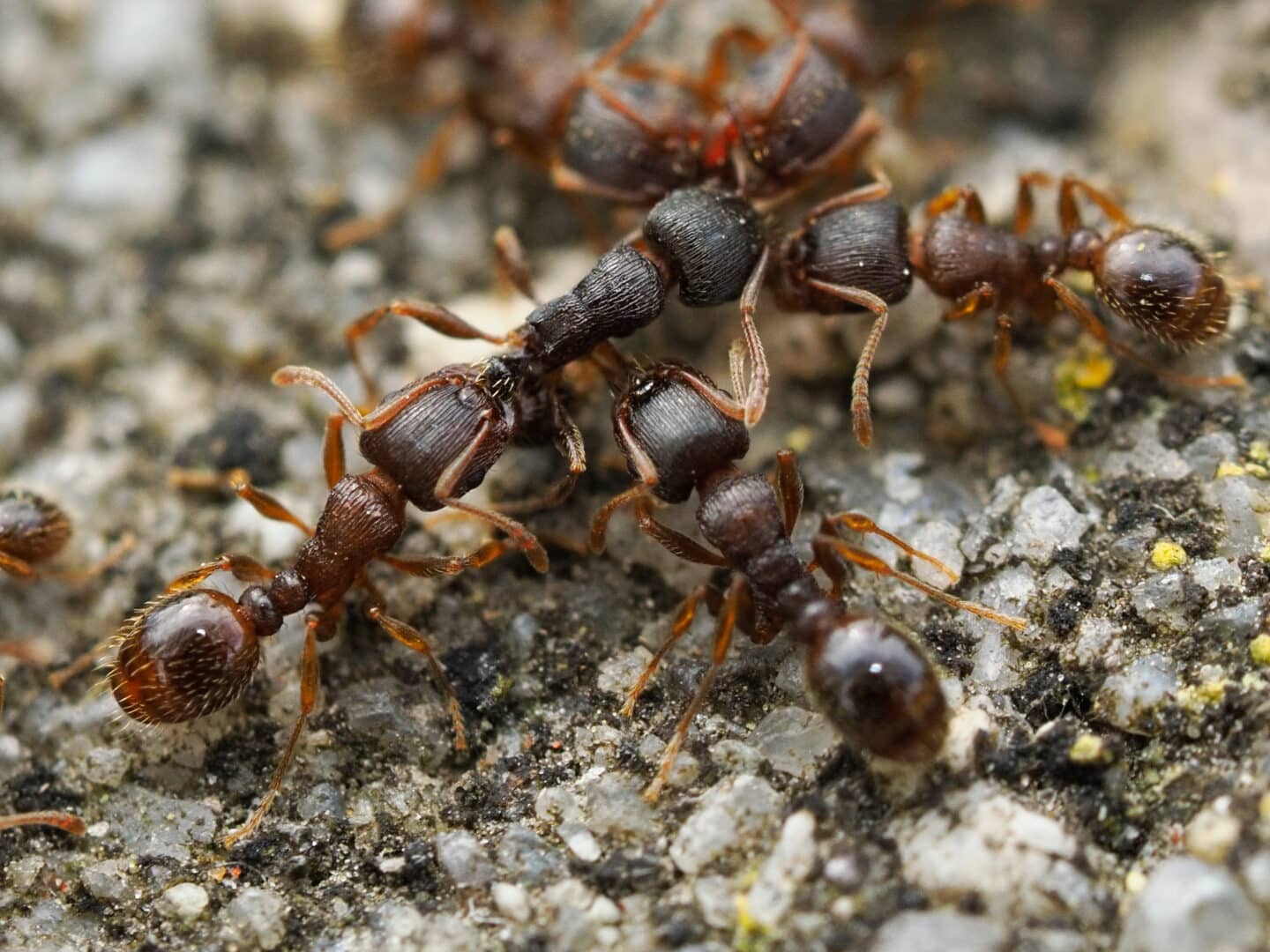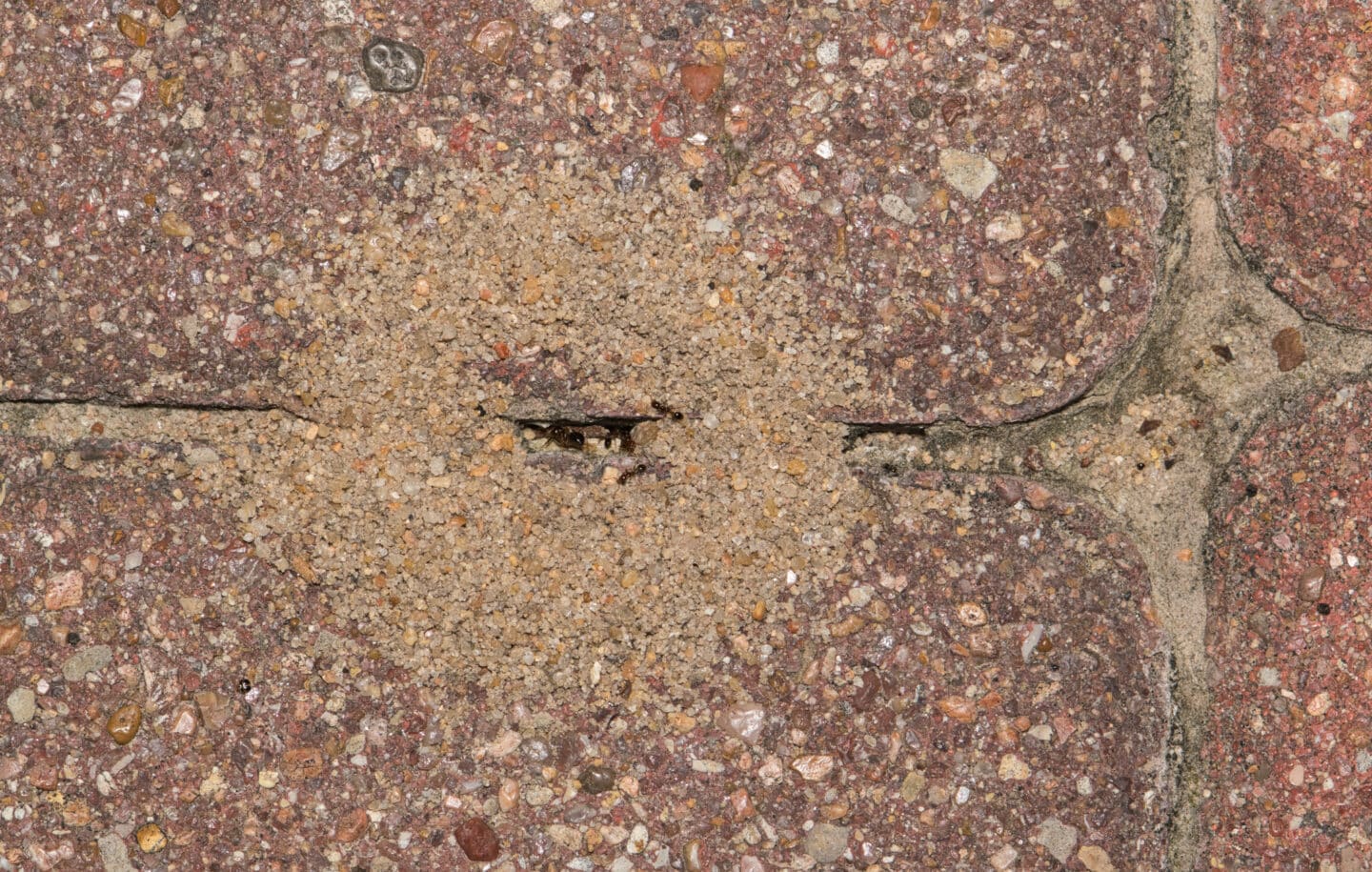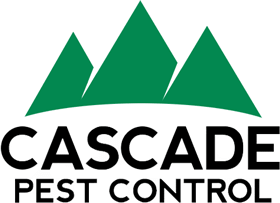Author: Kurt Treftz, Cascade Pest Control
The pavement ant is one of the most common house-infesting ants in the United States. Its habits and appearance have almost come to represent all of ant-hood. They are small, black, trail-leaving critters that eat all kinds of foods and build a cone-shaped anthill near sidewalks and driveways.
Here are a few more things you might want to know about these ubiquitous pests.
Identifying Pavement Ants

Appearance:
At just 2.5-3mm long, these small ants are usually brown to black in color. The females and reproductives have furrows on their head and thorax. The two-segmented thorax has 2 rear projecting spines on the posterior section that are not present on the males.
Habits:
Pavement ants are trail laying insects. They will follow food to a sources and leave a trail for others to follow. They will forage as much as 9 meters from their nest. Winged reproductive ants swarm naturally in the springm but they can be seen swarming from heated buildings in late fall and even February.
Diet:
Like many other ants species, pavement ants are attracted to sweet food like honeydew and plant sap. However, they are voracious eaters and will consume just about anything they can reach. In homes, they will feed on meat, greasy food, other insects, as well as sweet treats.
Habitats:
As their name suggests, pavement ants tend to nest around sidewalks, building slabs, and large rocks. They will capitalize on any cracks or weakness to get into a structure. They leave a distinctive, cone-shaped pile of sand / soil when they excavate that broadcasts their presence. Usually they remain at ground level, but they are able to climb masonry walls. They will nest in walls, insulation, and under floors in homes.

Threat of Pavement Ants
Pavement ants are considered a nuisance threat, which means they don’t pose any particularly public health issue. However, they are a structure invading insect. This means that they can contaminate food and spread germs. They also cause stress and anxiety for homeowners.
They also nest under pavement which could cause some buckling and warping of sidewalks and as they erode the space underneath.
Controlling Pavement Ants
As with all pests, a good offensive is a good defense. Don’t let them get a foothold in the first place.
Trim back trees and bushes
Ants will use any excuse to access your home and branches that touch your house become a superhighway to these insidious little critters. Stay up on your lawn care and trim back your vegetation.
Seal entry points
Ensure that they don’t have easy access to your home through broken screens, poor seals, or cracked foundation. Caulk gaps around windows. Invest in a door sweep on outside entries.
Dispose of debris promptly
Don’t let trash or other organic waste pile up. This is a huge attraction for bugs. Instead, regularly remove garbage from your home and store in outside cans that are serviced frequently. Dispose of leaf piles, dead branches, and other material that can rot and attract insects.
Seal up food / Sweep floors
Inside your home, make sure that you are keeping ants at bay by cleaning well. Seal all food (including pet food) in air tight containers. Sweep or vacuum your floors regularly.
If you do find yourself with an ant infestation, call the experts in to help. Cascade Pest Control has more than 45 years of experience in the greater Seattle area. They are familiar with all the creepy crawlies and can help you develop a plan of attack for pavement ants.
